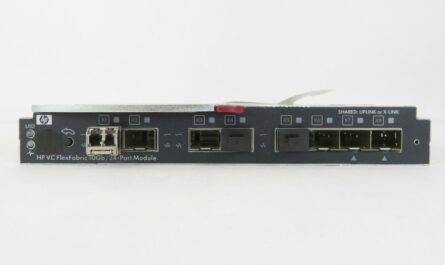Material handling robots are specialized industrial robots designed to assist in various material handling tasks within manufacturing and logistics facilities. They are used to automate and streamline processes such as pick and place operations, palletizing and depalletizing, product assembly, machine tending, order fulfillment, quality control, and more. With their advanced sensors and capabilities, they allow companies to improve productivity, reduce costs, enhance safety, and meet increasingly complex operational demands.
Types Of Material Handling Robotics
Articulated Robot Arms
Articulated robot arms are the most common type of Material Handling Robotics. They feature multiple rotating joints similar to a human arm, allowing them to access work areas in three dimensions. Articulated arms excel at pick and place tasks where they need to retrieve parts/products from one location and place them in another with great precision and speed. They provide superior flexibility compared to other robot types.
Scara Robot
SCARA (Selective Compliance Assembly Robot Arm) robots are specialized 4-axis robot arms designed for fast, repetitive pick and place tasks in horizontal planes. They offer high speed and accuracy for applications like assembly, quality inspection, machine tending, and packaging. SCARA robots have a compact vertical structure taking up less floor space than articulated arms.
Delta Robot
Delta robots consist of three parallel robot arms connected to a mobile platform at the top and base. Delta robots are well suited for high speed palletizing and depalletizing in applications like order fulfillment centers. Their lower weight and friction allows very high accelerations.
Cartesian Robot
Cartesian robots have linear actuators moving platforms or end effectors along the X, Y and Z axes. They are best for applications requiring precision placement and movement in a precise plane like gluing, dispensing, welding, and inspection. Cartesian robots offer high speed and accuracy for assembly tasks involving the arrangement of tightly spaced components.
Collaborative Robot
Collaborative robots or cobots are designed to work safely alongside humans within a shared workspace. They have sophisticated sensors and controls allowing direct physical human-robot collaboration during tasks like material handling, assembly, quality control, and packaging. Cobots provide a cost-effective option for small batch and customized production.
Mobile Robot Platforms
Mobile robot platforms function as the “brains” of self-driving vehicles used for functions like transporting goods, tooling and supplies between facilities and within warehouses. They use a combination of sensors like cameras, lasers, and RADAR along with localization and path planning algorithms to autonomously navigate complex environments and interact safely with workers.
AGVs (Autonomous Guided Vehicles)
AGVs are self-powered mobile robots that transport goods through facilities along predetermined paths or maps. They automatically lock/unlock from conveyor lines or dock at stations for loading/unloading. Advanced AGVs can adjust payloads, communicate instructions to robots for item transfers, and rearrange facility layouts.
AMRs (Autonomous Mobile Robots)
AMRs are a newer class of mobile robot that uses simultaneous localization and mapping (SLAM) to autonomously navigate complex environments without predefined paths or traditional beacons/ wiring. AMRs have greater flexibility than AGVs to handle changing facility layouts and congestion.
Benefits of Material Handling Robotics
Increased Productivity and Throughput
Material handling robotics can operate 24/7 without breaks, increasing plant capacity utilization and throughput significantly compared to human workers. Their precision, speed and stamina allows processing more units per hour.
Reduced Labor Costs
Material handling robotics eliminate the need for human labor in hazardous, strenuous or repetitive material handling tasks, reducing dependence on temporary/ seasonal labor. Robots do not require benefits, incur injury risks or demand higher wages over time.
Improved Workplace Safety
Robots can handle jobs that put humans at risk of accidents from lifting/carrying heavy loads, exposure to chemicals or sharp/hot machines. They minimize safety issues from workplace ergonomics, slips/trips and human errors.
Enhanced Quality and Consistency
Robots offer repeatable high-precision performance without diminishing returns. They improve first pass yield, reduce defects and reworks through consistent placement, torque/tensioning control during assembly tasks.
Increased Flexibility
Robots can quickly handle product changeovers, accommodate new SKUs and reconfigure stations/lines for customized small batch production. This helps enterprises respond to shifting market demands at a lower cost.
Applications of Material Handling Robotics
Automotive Manufacturing
They are used for tasks like welding, painting, gluing/sealing parts, assembly of vehicle segments, load handling in press shops and engine/driveline installations.
Electronics Manufacturing
Material handling robotics handle intricate SMT component placement, quality assurance testing, panel handling, tray/ reel transfers in electronics/ semiconductor fabrication facilities.
Battery Production
They automate cell assembly, module stacking, packing operations in battery gig factories with strict quality requirements.
Food Processing
Used for food sorting/grading, primary/secondary food processing, palletizing, order fulfillment activities complying with stringent hygiene standards.
Pharmaceuticals
Performs sterile product/blister packaging, vial/syringe capping, kitting, palletizing, and product transfers within clean rooms.



